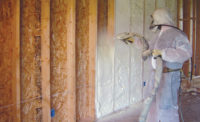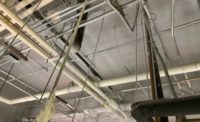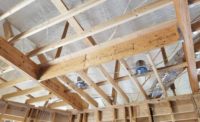Spray Foam's Efficiency Solution






As we all know, construction methods are very slow to change. Although products have evolved and overall performance has been enhanced, very few have actually altered the way in which we build. Many of the standards have been used for decades and are based around best effort rather than best practices. Yes, in many cases, standards were established by do-gooders who were willing to benchmark a value and stand behind its logic. Building science has come a long way and has provided more scientific gauges for new standards, but the greatest change and impact on the way we build is coming from new technologies. New technologies and methods are being applied to all types of construction both new and retrofit in residential and commercial construction. The goals of new technology often focus on lower cost, or faster payback and higher performance. Performance is a general description that can relate to longevity, aesthetics or offer some additional value to the building owner or tenant.
Homes that Breathe
Historically, homes have been built to “breath” primarily due to concern for trapping moisture within the structure. This approach leads to greater energy expense, poor air quality, and compromises the comfort of the occupants through drafts and other temperature related fluctuations. One product that has gained significant momentum in construction, especially over the last decade, is spray polyurethane foam.
The primary performance characteristics of foam change the breathability of a structure, therefore creating control of unwanted and uncontrolled airflow. Uncontrolled airflow is responsible for homeowner and building owner challenges to energy bills, air quality and tenant comfort. Spray foam has gone from an almost immeasurable percentage of market share to an estimated 20 percent or more of the insulation market in recent years with the greatest growth coming in the new and retrofit residential segment.
There are many reasons for this mainstream and explosive growth. First, spray foam has offered a great solution to growing code regulations pertaining to limitations in air infiltration and increasingly stringent insulation minimums particularly is northern climate zones. In some cases, the new codes are arguably impossible to meet, in lieu of spray foam, without resorting to drastic measures such as 2-inch by 12-inch construction. Homebuilders are currently faced with a decision on how best to address these new code requirements. Do they increase costs and reduce sellable square footage by going to larger framing? For those who haven’t considered spray foam, there are better solutions that bring greater value and high performance.
Looking Past the Wallpaper
Spray foam is approximately two times the cost of more traditional insulation materials but the positive impact to the value chain must be considered. Builders are being challenged to provide high performance and differentiation in a recovering and competitive market. Additionally, the code requirements continue to stiffen and add costs to construction. If thicker walls are required to meet new code standards, the costs to the builder including more insulation, more framing, more freight costs for delivery of these materials, added installation costs and a loss of living space (approximately 30 square feet in an average sized home) can add up to thousands of dollars of lost profit.
Consumers are demanding high performance and are looking past the wallpaper; it’s no longer just about wood floors, granite counter tops and stainless appliances. Homeowners understand the volatile costs of energy will remain a factor for the foreseeable future. Further, there is much more awareness today about air quality in our homes, largely driven by a startling increase in the prevalence of asthma. Spray foam is particularly known for controlling unwanted airflow and eliminating unconditioned air from the home. This reduces airborne pollutants and contaminants, all the while reducing uncontrolled air leakage which can be up to 40 percent of energy loss.
Green Chemistry
Spray foam is not new but the technology continues to evolve. As the CEO of one of the largest spray foam manufacturers in the business, I was invited to the White House twice to participate in an Executive Roundtable discussion about the President’s Climate Action Plan. The goal of these discussions is to reduce CFCs from the environment, which is believed to contribute to global warming. Coolants or blowing agents used to limit thermal conductivity are common applications, such as refrigerators and air conditioners. In spray foam, the blowing agent is used to make the foam rise and create one of the most efficient insulations with the highest R-value, available today. As an advocate for technology and the first in the world to commercialize HFO (non-CFC) spray foam, Lapolla was invited to participate in the discussions on this important topic. But this focus only lends itself to green chemistry. The overriding value of spray foam is the in-situ, or installed value. By significantly reducing the growing demand for energy, there is a meaningful reduction on the carbon footprint. It is generally believed that in the United States, 20 percent of greenhouse gas emissions come from home energy use. Broad acceptance of spray foam will significantly reduce this impact.
There is a clear transition occurring in the general markets around high performance insulation. The market share of spray foam is growing on an international basis. In fact, North America is not the only place where spray foam is mainstreaming. There has been a significant move over the last few years in the United Kingdom, Europe, Scandinavia and Japan toward spray foam, among others. The demand from consumers is largely the same around the world. Spray foam provides a solution to the growing demand for high performance structures, by reducing energy consumption, providing better air quality and comfort in extreme and changing climatic conditions.
Looking for a reprint of this article?
From high-res PDFs to custom plaques, order your copy today!








